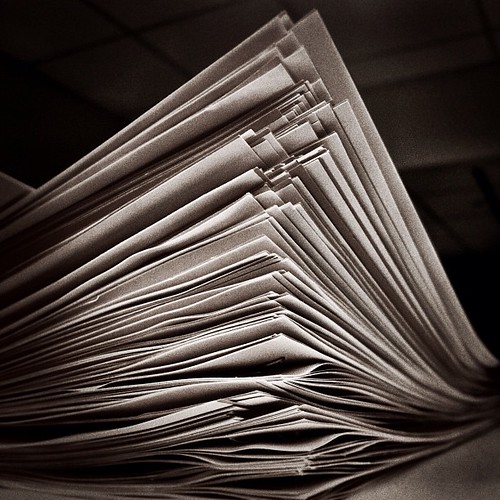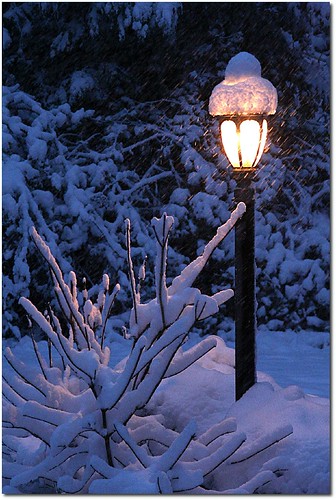It's hard to believe
The Lion, the Witch and the Wardrobe was published just 62 years ago, in 1950. It feels like it's been a part of children's literature for ever. It's certainly been part of TV movies, miniseries and films for a long while, but then things move pretty quick in the movies. It's the first book in the
Chronicles of Narnia series, and one of Times All-TIME 100 Novels.
C. S. Lewis nearly didn't get it published, and now it's one of the most beloved children's books ever written.
The Book
The Lion, the Witch and the Wardrobe is set in war-torn 1940s Europe...and in a mythical land called Narnia. It opens with the four Pevensie children, of whom there are two boys (Peter and Edmund) and two girls (Susan and Lucy). They've been forced from London due to WWII and into the country home of Professor Digory Kirke.
While exploring his large home, Lucy goes into an old wardrobe...and all the way through it into a magical, snow-covered landscape. Here, she meets a faun named Mr. Tumnus. They have a lovely tea party, and he thinks about turning her over to the evil Queen of Narnia, also known as the White Witch, but admits that he cannot do it. He explains all about the evil White Witch, who has trapped all of Narnia under her magical thumb. Lucy goes back through the wardrobe to tell Susan, Peter and Edmund about the magical place she's found. They do not believe her.
But Edmund suspects she may be telling the truth, and follows her one night into the wardrobe. He ends up meeting the White Witch, who offers him delicious treats and uses her own magical powers on him. Lucy finds him in Narnia, and together they go back through the wardrobe. Once there, however, Edmund denies that Narnia exists to the other two, betraying and upsetting Lucy.
Finally, all four of them end up in Narnia together. Mr. and Mrs. Beaver (who are, yes, actual beavers) invite them to dinner and they hear more about the evil White Witch. A prophecy holds that two Sons of Adam and two Daughters of Eve will break her terrible winter curse, which holds the land in its icy grip.
Edmund leaves them to visit the White Witch's castle. When the Beavers discover his betrayal, they leave their den to take the remaining Pevensies to Aslan, the true King of Narnia. During the journey, they see signs that the curse is breaking. Snow is melting, and they meet Father Christmas during the trek. Peter receives a sword and shield as his gift, while Susan gets a horn and a bow. Lucy gets a dagger and a magic potion. They soon meet up with Aslan and his army.
The White Witch arrives to have a meeting with Aslan, and demands to execute Edmund for being a traitor. They work out a secret deal betwixt them, and in the night Aslan steals away from camp. Lucy and Susan wind up secretly following him, and see him as the Witch ties him to the Stone Table and kills him. The next morning, the table is broken clean in two and Aslan is totally fine. This is all due to magic, naturally.
Battle ensues, and in the end Aslan kills the White Witch. The children take their thrones at Cair Paravel, fulfilling the prophecy, and spend many years reigning over the kingdom of Narnia. Years and years later, the four are hunting a white stag in the forest when they find the lamppost that lies just beyond the wardrobe. They slowly begin to remember the lives they left behind in Narnia, and go back through the wardrobe. Here, they become children again and find that hardly any time has passed in England at all. The Professor tells them knowingly that they will, one day, return to Narnia.
The book is full of magic, mythical creatures, and battles. It's pretty much made for the movies, and maybe that's why the book has been re-made into film many, many times over.
The Films
The Lion, the Witch and the Wadrobe has been a TV movie at least three different times. ABC made a massive 10-part adaptation of the book in 1967. An animated version was released in 1979. The BBC made their own version in 1988 using puppets, animation and live action (covering all the bases). Subsequent TV adaptations followed.
The story finally became an epic film adaptation in 2005, courtesy of of Walt Disney. It won Oscars, raked in hundreds of millions of dollars at the box office and, so far, spawned two sequels. In this film version, Lucy Pevensie hides in the wardrobe during a game of hide-and-seek to accidentally discover Narnia. She does meet Mr. Tumnus, who does not turn her in, and returns to the Professor's house. Edmund winds up following Lucy into Narnia to meet the White Witch, and again Edmund lies to Peter and Susan about Narnia.
All four of them are forced to run from the dour housekeeper after accidentally breaking a window, and wind up in the Narnian wardrobe. They again meet the Beavers, and after Edmund sneaks off the remaining three go to meet Aslan. Again, they succeed in battle and return home at the end of the book. It's a very faithful and well-done adaptation, but there are some differences between the book version and the Disney film version of the story for the nit-pickers out there.
What Got Adapted?
The film version of the story actually shows the bombing of London, an event the book handles much more benignly. In the book, the four children go into the wardrobe together because the house is open to tours and they are supposed to keep themselves "scarce" during these times. The near-drowning scene in the film never happens in the book. Father Christmas, or Santa Claus, also looks quite different in the movie than he does on the page. The Witch also looks different. In the book she has black hair and a gold crown, clearly a departure from Tilda Swinton's blonde and icy beauty on film. Other differences are very minor, and even these small changes don't take anything away from the story. All in all, this is one adaptation that Disney managed to get right. They certainly had enough practice fouling up other stories. If you haven't already read the book, do it! Then watch the film, and compare for yourself.









.jpg)












